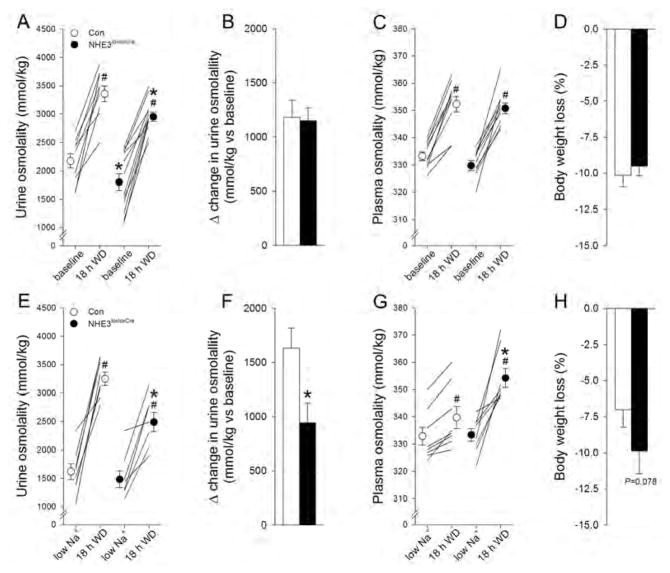Figure 2. Under baseline conditions and after 7 days on low NaCl intake NHE3loxloxCre mice have an impaired urinary concentrating ability in response to 18 hour water deprivation (WD).
(A) WD significantly increased urine osmolality in Con and NHE3loxloxCre mice and remained slightly but significantly lower after 18 hours in NHE3loxloxCre mice; however, (B) the total increase in urine osmolality was comparable between genotypes. (C) Plasma osmolality was comparable under baseline conditions and increased to a similar extent in both genotypes. (D) Body weight changes were comparable between Con and NHE3loxloxCre mice. After 7 days of low NaCl intake, WD significantly increased urine osmolality in both genotypes; however, the increase was significantly lower after 18 hours in NHE3loxloxCre mice. (E) The total increase in urine osmolality was significantly lower in NHE3loxloxCre mice. (F) Possibly as a consequence of the impaired urinary concentrating ability in NHE3loxloxCre mice, plasma osmolality increased to a significantly greater extent and (G) body weight loss tended to be higher in NHE3loxloxCre compared to Con mice. n=7–12/genotype; *P<0.05 versus Con same condition; #P<0.05 versus respective diet same mouse.

